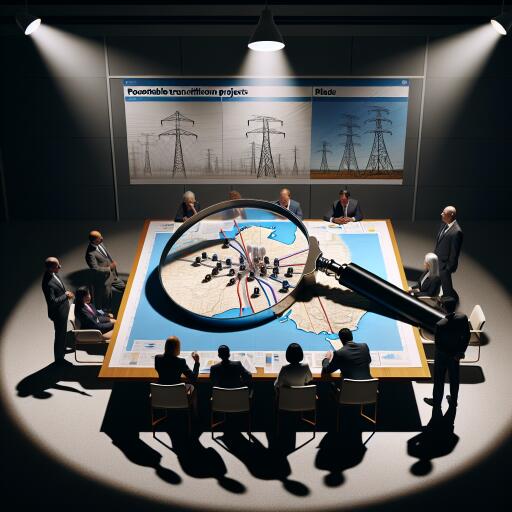
Australia’s Transmission Projects Permitted to Avoid ‘Uncomfortable Scrutiny’: Think Tank
In an intriguing development concerning Australia’s push towards renewable energy, a significant procedural step has been bypassed for two major transmission projects, sparking concerns over transparency and fiscal responsibility. This oversight involves an immense financial stake, approximately $9 billion (US$5.9 billion), raising alarms over the potential for overlooked cost inflations.
New South Wales (NSW) is witnessing the construction of three colossal transmission initiatives, orchestrated by the grid operator Transgrid. These initiatives are pivotal in harnessing and distributing renewable energy across the region. Among these projects, HumeLink stands out, designed to bridge the new Snowy Mountains Hydroelectric Scheme with renewable energy zones in South West NSW, effectively linking these power sources to metropolitan areas such as Sydney, Wollongong, and Newcastle through the Bannaby substation.
The project roster also includes VNI West, tasked with integrating the NSW and Victoria grids, alongside EnergyConnect, a project facilitating energy distribution across South Australia, Victoria, and NSW.
The Centre for Independent Studies (CIS), a respected think tank, has raised concerns regarding the procedural handling of the HumeLink and VNI West projects. The CIS points out that these projects progressed without undergoing a mandatory consultation process, a step deemed crucial for transparency and accountability. This development follows after the Australian Energy Regulator (AER) granted a waiver to the Australian Energy Market Operator (AEMO), allowing for an expedited feedback loop, thereby affirming the projects’ alignment with the integrated system plan without public consultation.
Aidan Morrison, CIS Energy Program Director, has voiced apprehension over the potential financial implications of bypassing this critical process. Morrison underscores the risk of imposing a $9 billion burden on consumers, a consequence of possibly hidden project costs that a thorough consultation process could unveil. “With $9 billion at stake, it’s very important to be transparent and follow the process,” Morrison highlights, asserting the necessity of scrutinizing the AER’s decision to circumvent public consultation, which could have exposed overestimated project benefits.
Morrison further critiques the AER and AEMO for their handling of project cost assessments, noting a worrying trend of cost escalations exceeding $1.5 billion. Despite these increases, project net benefits have been continually revised upwards, raising questions about the accuracy and justification of such optimistic projections.
The estimated costs for HumeLink and VNI West stand at $4.88 billion and $3.96 billion, respectively. Amid these financial forecasts, Energy Minister Chris Bowen has pushed for a rule change that would routinely exempt AEMO from consultation requirements over Feedback Loop notices, a move that Morrison interprets as an attempt to dodge rigorous scrutiny over the nation’s energy transition strategy.
Morrison argues that the expedited approval process for these projects, particularly HumeLink, deviates from prudent public sector practices. He advocates for a reevaluation of the project timelines, suggesting delays or possible cancellations in light of the discrepancies between projected and realistic completion dates.
While the AER defends its authority to issue waivers for skipping the consultation phase, legal experts, including barrister James Glissan, challenge the legal foundation of such discretion, suggesting a probable misinterpretation of regulatory powers.
This situation unfolds as Australia strides towards a renewable energy future, underscoring the importance of transparency, accountability, and fiscal prudence in the execution of major infrastructure projects. It sets a precedent for how such initiatives might be scrutinized and governed, inviting a broader dialogue on the balance between expediency and thorough public oversight in the transition to renewable energy sources.





Leave a Reply